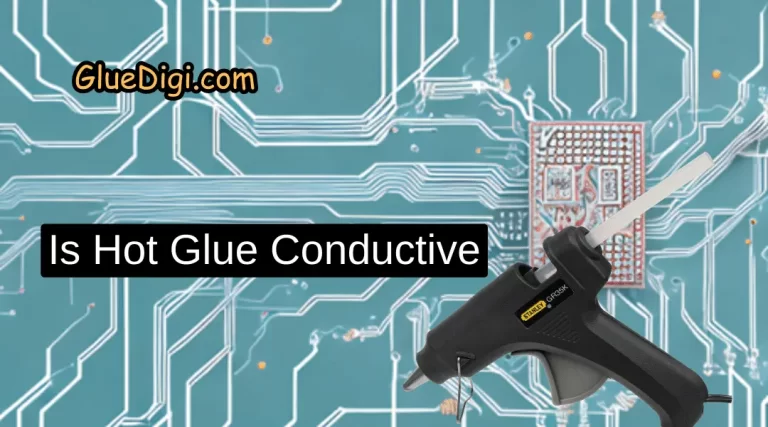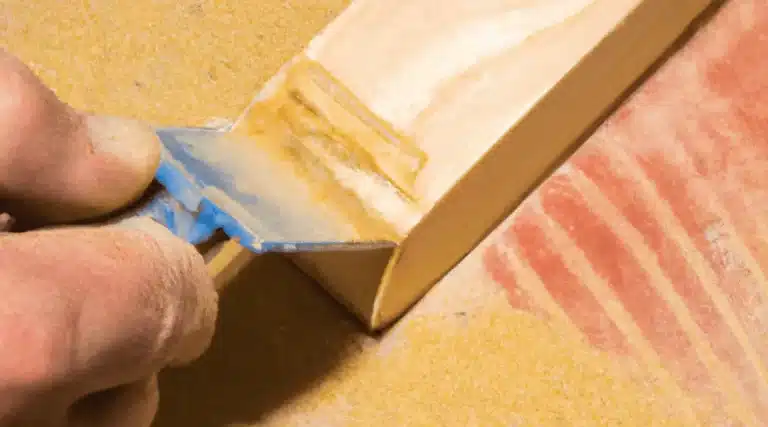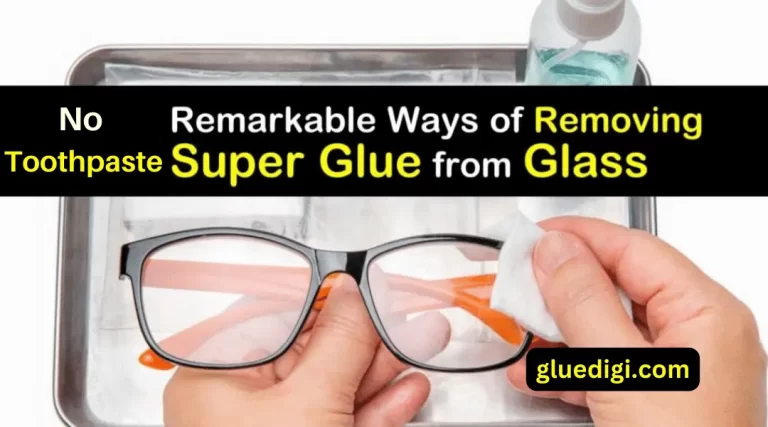EPDM rubber is a popular material used in a wide range of applications, from roofing to automotive parts. One of the primary challenges of working with EPDM rubber is finding the right adhesive that can effectively bond it to various substrates.
Adhesives play a critical role in ensuring the longevity and durability of EPDM rubber products, and choosing the wrong adhesive can result in costly failures and safety hazards.
Identifying the best adhesive for bonding EPDM rubber requires a thorough understanding of the material’s properties and the various types of adhesives available. It also involves considering factors such as the application’s environmental conditions, the substrate’s surface, and the bonding strength required.
This article aims to provide practical guidance on selecting the most suitable adhesive for bonding EPDM rubber effectively, ensuring that products are reliable, safe, and long-lasting.
Understanding EPDM Rubber
EPDM rubber is a synthetic elastomer that possesses exceptional resistance to weathering, ozone, and UV radiation, making it an ideal material for outdoor applications such as roofing, seals, and gaskets. It is known for its excellent mechanical properties, including high tensile strength, elongation, and tear resistance, as well as good electrical insulation properties.
The manufacturing process of EPDM involves the copolymerization of ethylene, propylene, and a diene monomer, which results in a rubber material with a high degree of unsaturation. This unsaturation provides EPDM with its unique properties, such as excellent weatherability and heat resistance.
However, due to its low surface energy, bonding EPDM can be challenging, and choosing the right adhesive is crucial to ensure a reliable bond. Therefore, it is essential to understand the importance of selecting the proper adhesive for bonding EPDM rubber effectively.
Importance of Choosing the Right Adhesive
Bonding EPDM rubber can be a challenging task due to its unique properties such as high resistance to weathering, UV radiation, and chemicals. Using the wrong adhesive can lead to consequences such as poor adhesion, premature failure, and reduced durability of the bond.
Thus, it is essential to choose the right adhesive that can provide strong and long-lasting bonding for EPDM rubber in various applications.
Challenges in Bonding EPDM Rubber
Despite the widespread use of EPDM rubber, its low surface energy presents a significant challenge in achieving strong adhesion, requiring the consideration of alternative bonding methods to ensure successful bonding.
Bonding methods such as surface preparation, including cleaning and priming, can significantly improve the adhesion of EPDM rubber. However, traditional bonding methods are often ineffective due to the material’s low surface energy.
This has led to the development of alternative bonding methods, including pressure-sensitive adhesives and liquid adhesives with high cohesive strength. Choosing the wrong adhesive can result in poor bonding and ultimately lead to product failure.
Therefore, it is essential to carefully consider the bonding method and adhesive used to achieve the desired results.
Consequences of Using the Wrong Adhesive
The inappropriate selection of adhesive can result in negative effects, potentially leading to adhesive failure and subsequent financial loss.
When the wrong adhesive is used, it may not be able to properly bond with the EPDM rubber, creating weak spots and compromising the overall integrity of the product. This can lead to issues such as leaks, cracks, and other forms of damage.
Additionally, using the wrong adhesive can result in a shorter lifespan for the product, as it may not be able to withstand the wear and tear of daily use.
It is therefore important to carefully consider the type of adhesive used for bonding EPDM rubber, in order to ensure that it is effective and can provide a long-lasting bond.
In the subsequent section, we will explore the different types of adhesives that are suitable for bonding EPDM rubber.
Types of Adhesives for EPDM Rubber
EPDM rubber is a versatile material used in various applications, including roofing, automotive, and construction. To ensure effective bonding, it is essential to choose the right adhesive for the job.
There are three main types of adhesives for EPDM rubber: solvent-based, water-based, and contact adhesives, each with its unique properties and applications. It is crucial to understand the differences between these adhesives to select the most appropriate one for the task at hand.
Solvent-Based Adhesives
Solvent-based adhesives are a popular choice for bonding EPDM rubber due to their ability to provide high initial strength, with some formulations exhibiting shear strength as high as 25 MPa. These adhesives are particularly suitable for applications where high bond strength is required, such as in automotive and construction industries.
However, it is important to consider safety considerations when using solvent-based adhesives, as they can be flammable and emit harmful fumes. Therefore, proper ventilation and personal protective equipment should be used during application.
Despite these safety concerns, solvent-based adhesives remain a practical and reliable option for bonding EPDM rubber.
In the next section, we will discuss water-based adhesives, which offer a safer alternative to solvent-based adhesives.
Water-Based Adhesives
While solvent-based adhesives have been the traditional choice for bonding EPDM rubber, water-based adhesives have gained popularity in recent years due to their lower toxicity and environmental impact. These adhesives are typically applied using brush, roller, or spray methods and have varying drying times depending on the specific product and environmental conditions.
To ensure a successful bond, it is important to follow the manufacturer’s recommended application methods and drying times. In addition, water-based adhesives may require longer drying times compared to solvent-based adhesives.
Moving forward, it is important to consider the benefits and drawbacks of both solvent-based and water-based adhesives before selecting the best option for bonding EPDM rubber. The next section will delve into contact adhesives and their properties.
Contact Adhesives
The properties and application methods of contact adhesives will be explored in detail in this section, providing valuable information for those seeking to make informed decisions about adhesive selection for their projects.
Contact adhesives are a popular option for bonding EPDM rubber due to their numerous benefits, including excellent bonding strength, high resistance to heat and chemicals, and flexible bonding. These adhesives work by applying a thin layer to both surfaces, allowing them to dry before pressing the surfaces together.
When applying contact adhesive, it’s important to consider the temperature, humidity, and surface preparation to ensure optimal bonding. Some tips for applying contact adhesives include using a clean surface, applying the adhesive in a well-ventilated area, and using the recommended amount of adhesive.
Contact adhesives are a great option for bonding EPDM rubber, and understanding their benefits and application methods can help you achieve a successful project outcome.
In the next section, we will discuss factors to consider when selecting adhesives for your project.
Factors to Consider When Selecting Adhesives
When evaluating potential adhesives for bonding EPDM rubber, adhesive strength, surface preparation requirements, and curing time should be taken into account.
Adhesive compatibility and surface preparation are crucial factors to consider. The adhesive must be compatible with both the EPDM and the substrate it is bonding to, and surface preparation is necessary to ensure proper adhesion.
Curing time is also important, as it affects the timeline for completing the project. Other factors to consider include environmental conditions, such as temperature and humidity, as well as the end-use application of the bonded materials.
By carefully considering these factors, the most effective adhesive can be selected for the specific project. The next section will discuss application techniques for effectively bonding EPDM rubber.
Application Techniques
This section will explore techniques for the application of adhesives to bond EPDM rubber and its substrate, providing an understanding of the practical steps required to achieve a successful bond.
It is essential to prepare the surface before applying the adhesive by cleaning it with a suitable solvent to remove any dirt, oil, or debris that could affect the bonding process. The surface should be free of any moisture or contaminants that could compromise the bond’s strength.
When applying the adhesive, it is crucial to follow the manufacturer’s instructions regarding the recommended coverage rate, temperature, and curing time. Application tips include using a brush or roller to apply the adhesive evenly, avoiding over-application, and ensuring that the adhesive is spread to the edges of the substrate.
Quality control measures should be incorporated to ensure that the adhesive is applied correctly, and testing should be done to verify the bond’s strength. The next section will focus on testing and quality control measures to ensure that the bond meets the required standards.
Testing and Quality Control
Testing and quality control measures are essential for ensuring the bond’s strength and durability when bonding epdm rubber. Research has shown that incorporating these measures can reduce the failure rate of bonded assemblies by up to 50%.
Therefore, it is crucial to perform proper testing procedures and quality assurance checks before and after bonding to ensure that the bond meets the required standards and specifications. Testing procedures may include measuring bonding strength, conducting environmental testing, and checking for any defects or imperfections. Quality assurance measures may include ensuring that all materials used in the bonding process meet the required standards and that the bonding process is carried out correctly.
By incorporating these measures, the likelihood of bond failure can be significantly reduced, resulting in a more reliable and durable bond. Furthermore, proper maintenance and repair procedures should be put in place to ensure that the bond remains strong over time.
Maintenance and Repair
Maintenance and repair are crucial aspects of any bonding process, and it is important to be aware of common bonding issues that may arise.
Common issues include improper preparation of surfaces, incorrect adhesive selection, and inadequate curing time.
To ensure success, it is important to follow proper maintenance and repair procedures, including regular inspections and prompt repairs to prevent further damage.
Common Bonding Issues
Bonding issues often arise when attempting to join materials with varying surface energies, which can result in poor adhesion and premature failure. Some common bonding issues when working with EPDM rubber include:
1) inadequate surface preparation, such as failure to clean or roughen the surface,
2) use of the wrong adhesive or insufficient coverage,
3) improper curing time or temperature, and
4) incompatible substrates.
To overcome these challenges, appropriate bonding techniques and troubleshooting tips should be employed, such as using a primer, selecting the right adhesive based on the specific application and materials involved, following manufacturer guidelines for curing time and temperature, and ensuring that the substrates are compatible with each other.
It is crucial to address any bonding issues promptly to prevent further damage or failure and to ensure the longevity of the bond. In the subsequent section about maintenance and repair procedures, we will discuss best practices for addressing any issues that may arise after bonding is complete.
Maintenance and Repair Procedures
While it may be tempting to ignore maintenance and repair procedures, doing so can lead to costly and time-consuming issues down the line, making it imperative to stay informed and proactive in addressing any potential problems.
Preventative measures such as regular inspection and cleaning can go a long way in ensuring the longevity and effectiveness of the adhesive bond for EPDM rubber.
In the event of damage or failure, cost-effective solutions such as patching or reapplication of adhesive can be implemented to prevent further deterioration.
It is important to follow manufacturer instructions and seek professional advice when necessary to avoid exacerbating the issue.
By taking these steps, one can minimize the need for major repairs or replacements, ultimately saving time and money in the long run.
Conclusion
EPDM rubber is a popular material used in a wide range of industries due to its excellent resistance to heat, weather, and chemicals. To ensure the effective bonding of EPDM rubber, it is crucial to choose the right adhesive. There are various types of adhesives available for this purpose, each with its advantages and disadvantages.
Factors such as the type of substrate, the environment, and the application technique must be considered when selecting the appropriate adhesive. Application techniques play a crucial role in achieving a strong bond between EPDM rubber and the substrate. The surface must be cleaned and prepared correctly before applying the adhesive. Quality control and testing must be carried out to ensure the adhesive’s effectiveness and durability. Regular maintenance and repair are necessary to extend the service life of the bonded components.
According to a recent study, the global market for adhesives is expected to reach USD 66.8 billion by 2026, growing at a CAGR of 5.6% from 2020 to 2026. The increasing demand for adhesives in various industries such as automotive, construction, and packaging is driving the market’s growth.
As the use of EPDM rubber continues to grow, selecting the right adhesive for effective bonding will remain crucial. Understanding the properties of EPDM rubber and the factors that influence adhesive selection is key to ensuring the durability and reliability of bonded components.




